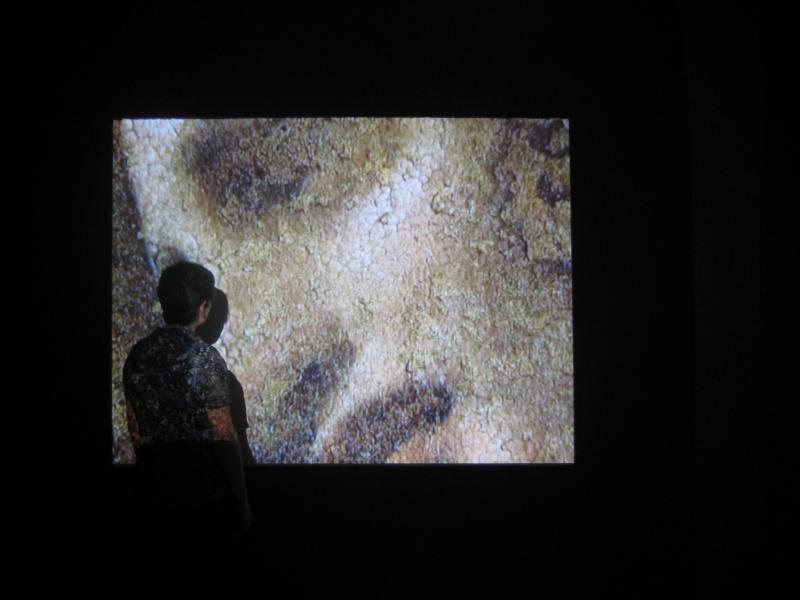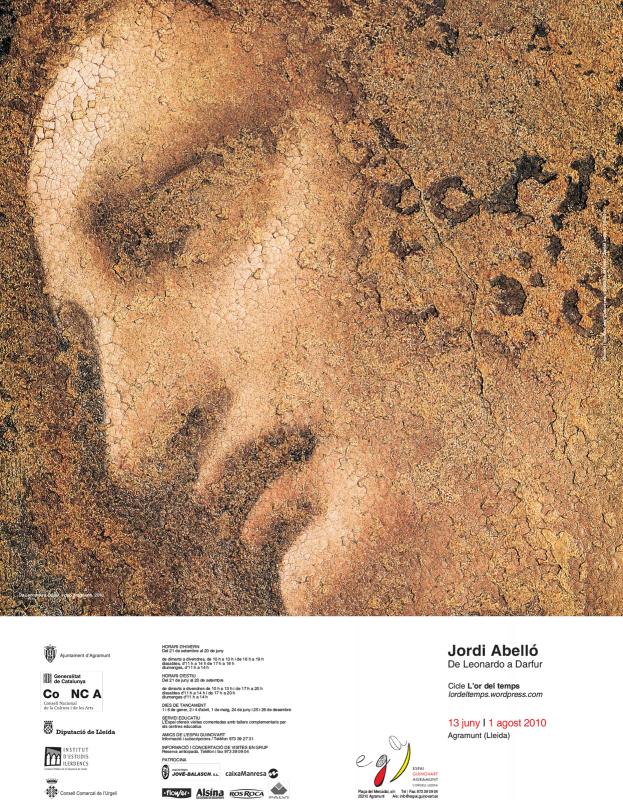Jordi Abelló
De Leonardo a Darfur
Paradoxically, today forgetting does not need the passage of time. It is almost immediate and is based on the dispersion of stimuli and information. It does not originate in dissipation, but in saturation. That is why, when Jordi Abelló proposes to focus our attention again on an event of such tragic magnitude as the so-called genocide of Darfur, we would not want to resort simply to the term -of such repeated, sometimes inoperative- of memory and your necessary protection.
With De Leonardo to Darfur, Abelló establishes an unusual route that does not transfer from one of the icons -the pleonasm is totally justified- of western painting, Leonardo's Holy Supper, motive of banal tourism and of legitimate aesthetic admiration, up to the rough scenario of a terrible war, with the image that Google Earth offers of Darfur, real representation and planimetry at the same time. It is an unsuspected journey that highlights the substrata of forgetfulness.
In this piece, we can not fail to refer to the famous fragment of the treatise on Leonardo's painting where he said that in the dirty and irregular walls we could discover beautiful and picturesque landscapes, battles and agitated figures. With this he claimed the imagination and a painting based not on the realistic or idealized description, but on the visual effect, as in its hazy and characteristic sfumato. The vagueness imprecise but suggestive of phantasmagoria of this resource and this look serve as a model of an illusionist conception of the image. In the same way, we allow ourselves to be seduced today by the kaleidoscope of visual stimuli falling, perhaps, in a narcotic hypnotism, in a pleasant confusion. But this fundamental mechanism of the image can be turned around and activated as a means of unveiling, of enlightening illumination.
The spatial and temporal displacement proposed by Abelló creates an overlap, that is, a synchronization. Darfur is present, or should be, beneath the surface of our imagination. From the suffering rictus of the apostle we arrive at the disturbing testimony of an episode that speaks of our terrible drive for violence. Here Leonardo is not an excellent point of departure, he does not have the brightness of the golden, but he offers a landscape of aridity that allows the craquelé of the painting to be the cracked of an arid and desert land and that both evoke the trace of time and the wound. As in a landing, a moral insight, we access the painful layers of a dehumanization that, irresponsibly and perversely, we insist on not looking.
Àlex Mitrani



